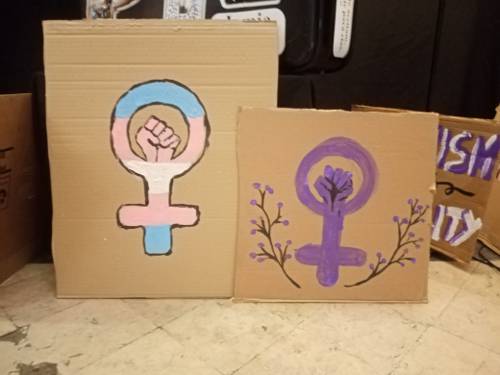
FAQ About The Impact of Protest Symbols in Cultural Movements

What is a protest symbol?
A protest symbol is an icon, image, or sign used during demonstrations and movements to convey specific messages and sentiments. These symbols help unify participants and communicate the cause to a broader audience. They can be visual representations like flags, logos, or gestures, with their meanings often rooted in the cultural and historical context of the movement.

Why are symbols important in cultural movements?
Symbols play a crucial role in cultural movements because they succinctly encapsulate complex ideas and emotions, making the movement's messages more accessible and powerful. They help foster a sense of solidarity and identity among participants and can serve as a rallying point that captures media attention and public interest. Symbols help in distinguishing the movement and often become enduring representations of its ideals and struggles.

How do protest symbols enhance communication within movements?
Protest symbols enhance communication by conveying messages quickly, transcending language barriers and allowing for immediate recognition and understanding among supporters. This form of visual communication is often more impactful in engaging emotions and can be disseminated widely through media and social platforms, thereby amplifying the movement's visibility and reach.

What are some famous protest symbols used in history?
Some famous protest symbols include the peace sign, which became prominent during anti-war movements; the clenched fist, representing unity and resistance in struggles like the Civil Rights Movement; and the Guy Fawkes mask from Anonymous and Occupy movements, symbolizing anonymity and resistance against authoritarian governance. These icons are recognized globally and continue to be powerful tools for expression in contemporary protests.

How do protest symbols unify communities?
Protest symbols unify communities by creating a shared visual identity that participants can associate with and rally around. This shared imagery fosters a sense of belonging and collective purpose, reinforcing the movement's core principles. Symbols serve as common ground for supporters from diverse backgrounds to connect and collaborate, strengthening the movement’s cohesiveness.

What is the role of art in protest symbolism?
Art plays a vital role in protest symbolism by crafting imagery that can evoke emotional responses and inspire action. Artistic representations can simplify complex political messages into universally understood visuals, making them more relatable and moving. Art in protest helps to articulate the values and demands of the movement while also documenting the emotional landscape of the struggle for future reflection and inspiration.

How do cultural contexts influence protest symbols?
Cultural contexts significantly influence the design and interpretation of protest symbols. Symbols draw upon the cultural heritage, current societal issues, and collective experiences of a community, which inform their creation and meanings. A symbol that resonates in one culture may not have the same impact or meaning in another, underlining the importance of cultural specificity in the use of protest symbols.

Can protest symbols lead to social change?
Protest symbols can indeed contribute to social change by raising awareness, mobilizing public opinion, and influencing even broader societal discourse. When symbols resonate with the public and media, they can apply pressure to policymakers and corporate entities, prompting discussions that may lead to reforms. While symbols alone may not effect change, they are significant catalysts within larger strategic campaigns.

What is the significance of graffiti as a protest symbol?
Graffiti as a protest symbol holds significance as a form of grassroots expression often emerging in public spaces. It serves as an accessible platform for marginalized voices to comment on political and social issues. Graffiti becomes a tool for reclaiming space, challenging dominant narratives, and offering visceral and direct forms of criticism against systemic injustices, making it a potent form of protest art.

How do digital platforms affect the spread of protest symbols?
Digital platforms have revolutionized the spread of protest symbols by enabling rapid dissemination and engagement with a global audience. Social media, in particular, allows symbols to gain traction quickly, helping movements go viral. They facilitate international solidarity and awareness, enabling real-time sharing and adaptation across different cultural and political contexts.

What challenges do protest symbols face in modern movements?
Modern movements face challenges such as symbol dilution, where frequent use diminishes a symbol's impact and distinctiveness. Additionally, cooptation by commercial interests or opposing groups can undermine the original intent of a symbol. There is also the risk of over-simplification, where the complexities of a movement's goals are reduced to mere imagery, potentially losing nuance in public discourse.

How have protest symbols evolved over time?
Over time, protest symbols have evolved from simple, historically rich images to sophisticated, multi-layered forms incorporating digital technology and multimedia. While traditional symbols remain strong, contemporary movements often adapt existing symbols to include modern elements that resonate with current audiences, or create entirely new ones that reflect the digital age’s emphasis on interactivity and rapid dissemination.

What role does media play in the effectiveness of protest symbols?
Media plays a critical role in the effectiveness of protest symbols through its ability to amplify the reach and impact of the imagery. By broadcasting the symbols associated with a movement, media channels help shape public perception and understanding. Effective media coverage can increase empathy and support for the movement, while also holding institutions accountable by keeping the issues in the public eye.

How do protest symbols help in creating a narrative?
Protest symbols help create a cohesive narrative by visually encapsulating the movement's goals, values, and emotions. They provide consistent imagery that can be used across different media and contexts, linking disparate actions into a singular vision. This unified narrative helps sustain momentum and focus, ensuring that the movement's message is clearly articulated and remembered.

What are some common misconceptions about protest symbols?
A common misconception about protest symbols is that they are superficial or merely decorative. In reality, these symbols carry deep historical and political significance and are carefully crafted to evoke specific emotions and messages. Another misconception is that symbols can bring change on their own; rather, they are tools within a broader strategy of communication and activism.

Can symbols from different movements be combined effectively?
Combining symbols from different movements can be effective when done thoughtfully, respecting the distinct meanings of each symbol and the contexts they represent. When blended sensitively, this practice can foster intersectionality, highlighting common struggles and solidarity between different causes. However, care must be taken to ensure the integration respects the historical significance and intended message of each symbol.

How do protest symbols transcend generations?
Protest symbols transcend generations by embodying timeless values and struggles that remain relevant across different eras. They often become embedded in cultural memory, serving as reminders of past movements and inspirations for future ones. The iconic imagery helps create continuity, linking historical movements with contemporary efforts and thus preserving and extending their legacy.

What impact do protest symbols have on global movements?
Protest symbols have a profound impact on global movements by fostering international solidarity and providing a universally recognizable means of communication. Shared symbols can connect different movements across borders, helping to unify disparate causes under common themes of justice, equality, and resistance. This global resonance can increase pressure on international institutions to address the issues highlighted by these movements.

In what ways do protest symbols interact with traditional media forms?
Protest symbols interact with traditional media forms by enhancing storytelling and providing compelling visual content that captures audience attention. Newspapers, television, and radio can leverage symbols to create vivid narratives that inform and engage the public. Traditional media helps legitimize and spread the symbols, creating enduring images that become part of the cultural zeitgeist.

How can individuals participate in creating effective protest symbols?
Individuals can participate in creating effective protest symbols by engaging with the issues intimately and understanding the cultural context of the movement. Collaborating with artists and activists, they can experiment with different mediums to craft symbols that resonate emotionally and visually. Creativity, cultural sensitivity, and historical awareness are key components in producing symbols that are both impactful and enduring.
